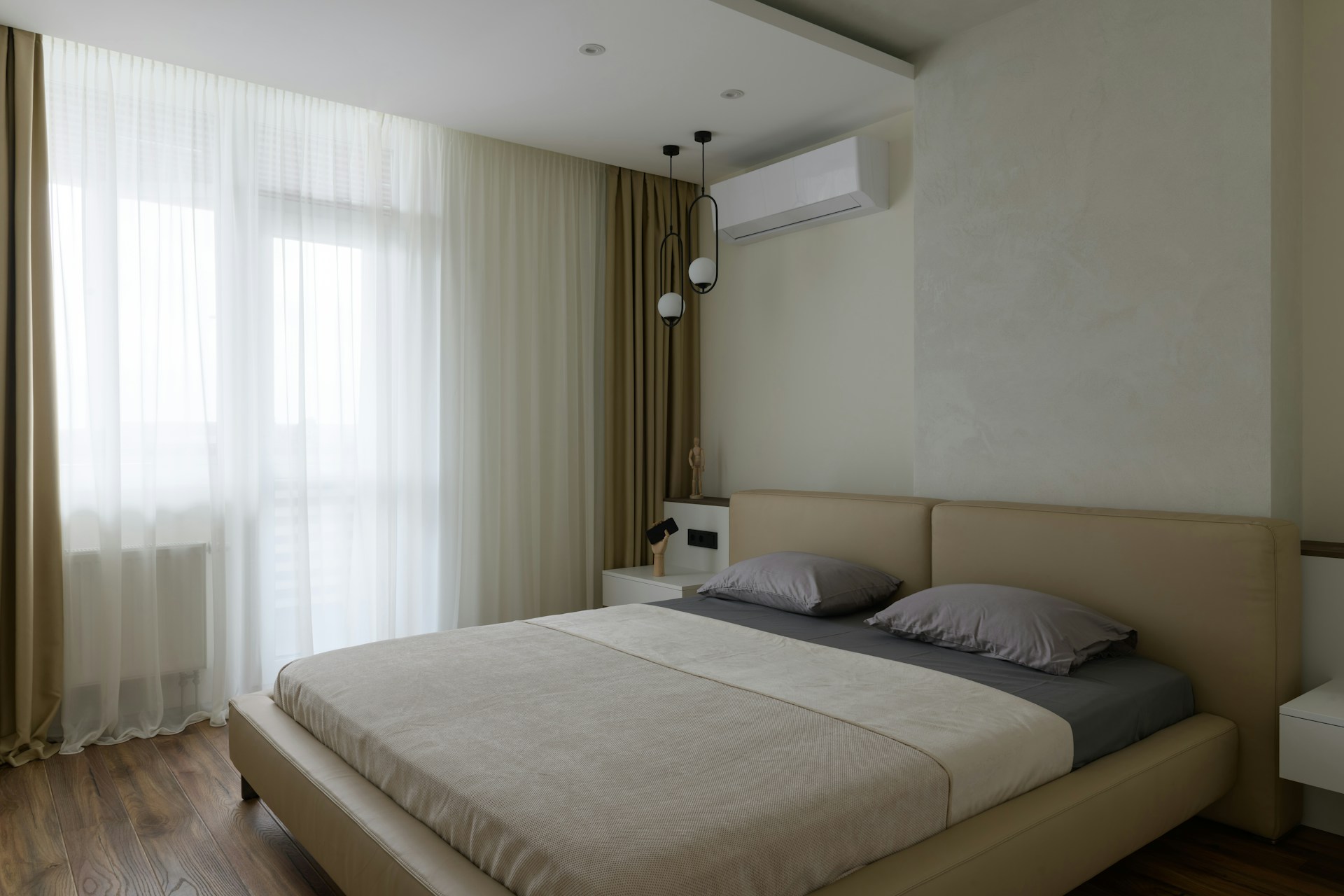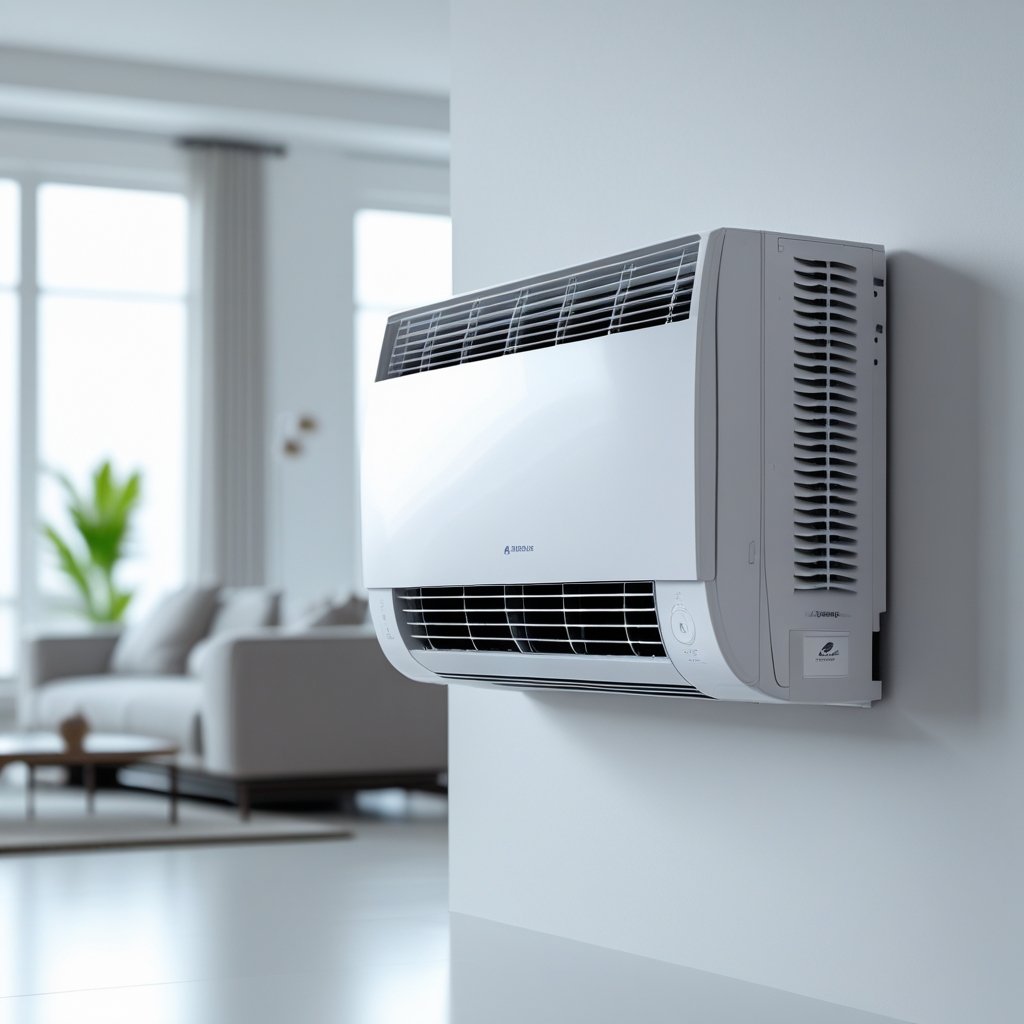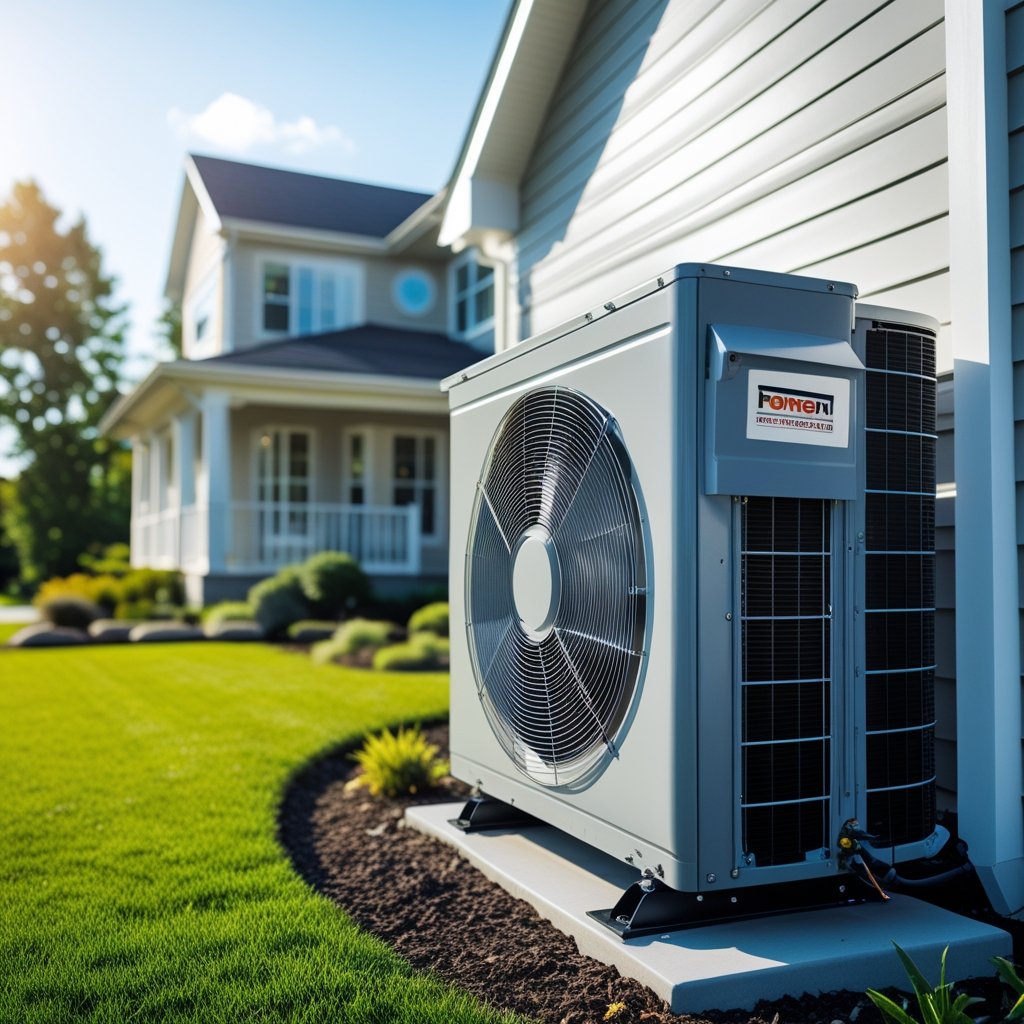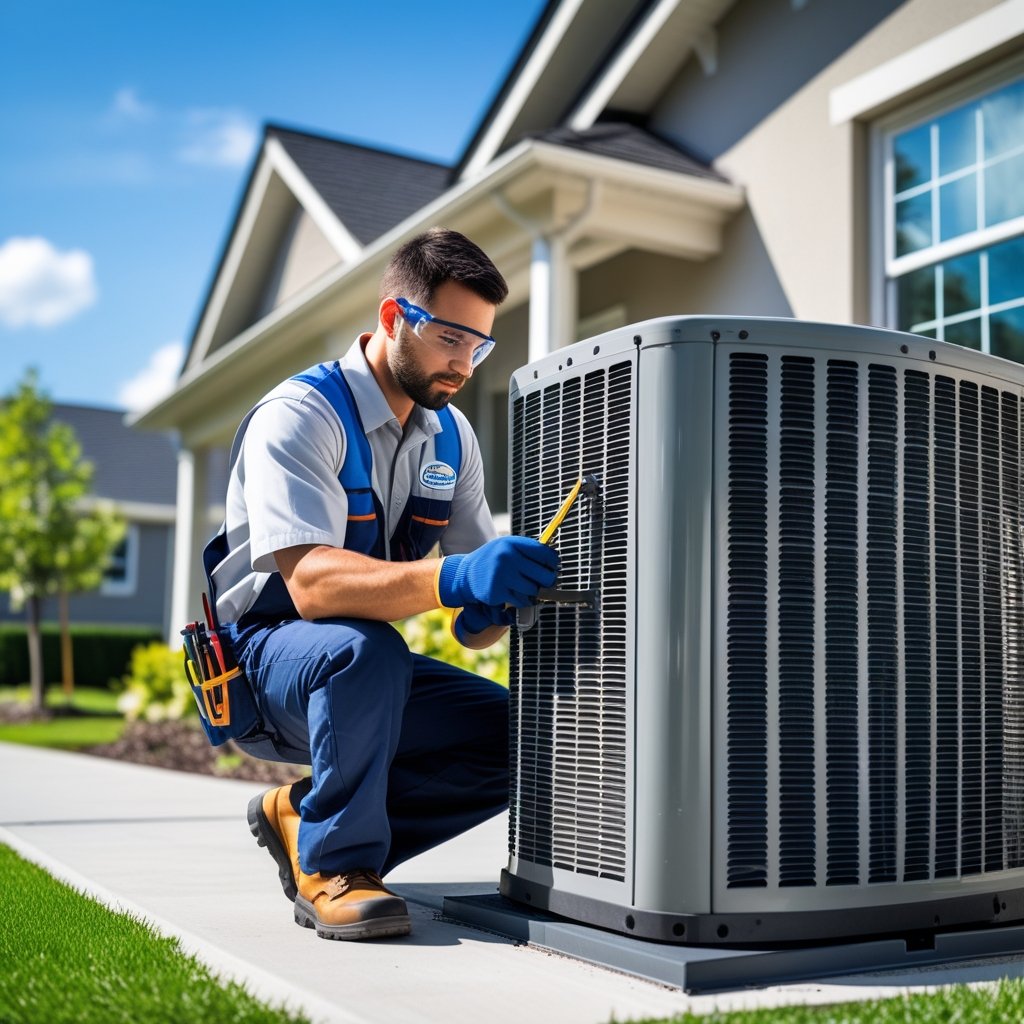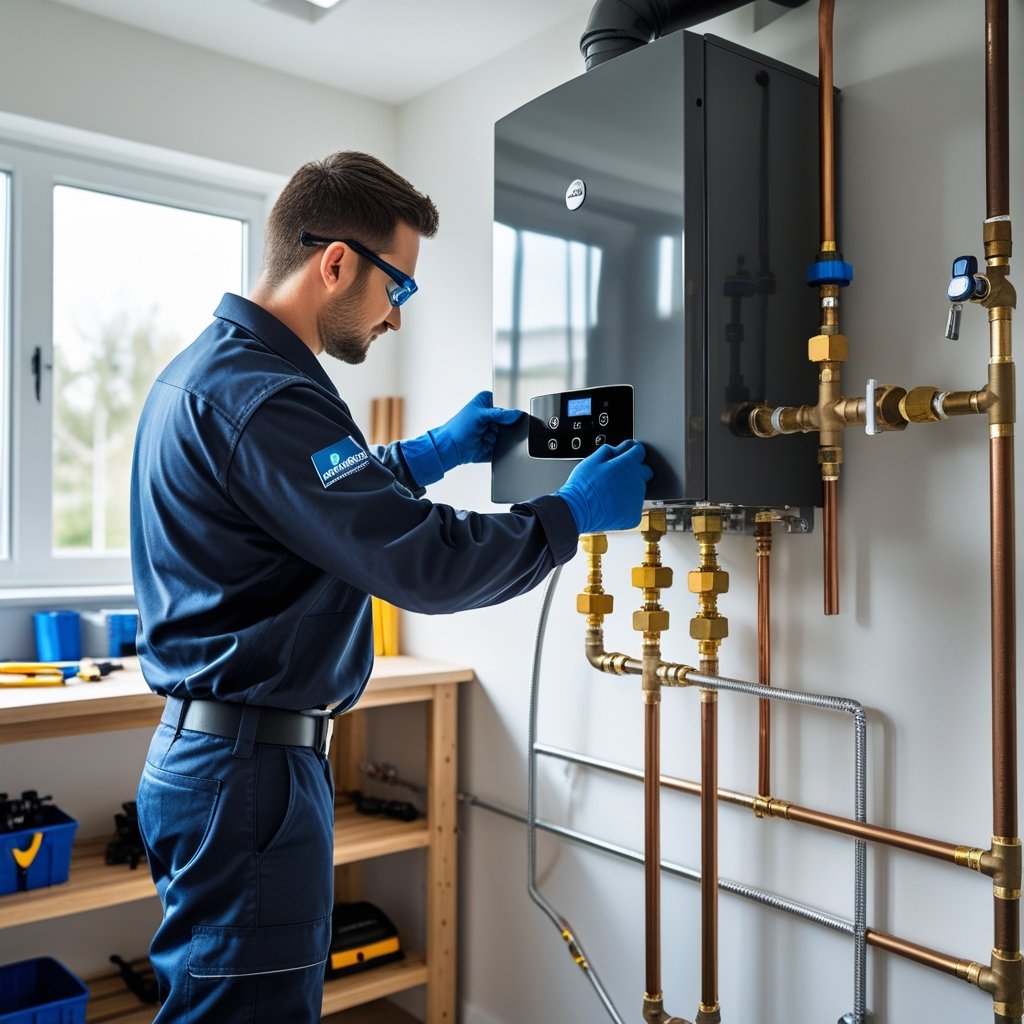If you’re thinking about improving your home’s heating and cooling, you might wonder, can you add a mini split to an existing system? Yep, you usually can. A mini split can work alongside your current HVAC setup, giving you more comfort and control without swapping out everything. It’s a neat way to target specific rooms and boost efficiency.
Adding a mini split is catching on in South Central Pennsylvania, mostly because it’s flexible and can trim energy bills. At Leo Kob Co., we’ve seen plenty of homeowners get a lot out of this option—especially when their main system just doesn’t cut it in certain spaces. It’s a pretty clever upgrade if you ask me.
Maybe you want to cool a new addition, or there’s that one room that’s always freezing. A mini split could be your answer. Let’s dig into how these systems work and whether they’re right for your place.
Understanding Mini Splits
Mini split systems let you heat or cool parts of your home without changing up your whole HVAC. They work differently from old-school units and come in a few styles. The big perks? Energy savings, easier installs, and you get to control comfort room by room.
How Mini Splits Work
A mini split has two main parts: an outdoor compressor and one or more indoor air handlers. The outside unit handles the heat exchange, while the inside units blow the warm or cool air right where you want it.
There’s no ductwork. Instead, refrigerant lines run through a small hole in your wall, connecting the indoor and outdoor units. This setup makes mini splits pretty quiet and more efficient than you might expect.
Each indoor unit has its own controls, so you can set different temps in different rooms. You don’t waste energy heating or cooling unused spaces, which is always a plus.
Types of Mini Split Systems
There are basically two kinds: single-zone and multi-zone.
- Single-zone: One indoor unit, one outdoor compressor. Great for a single room or a small office.
- Multi-zone: Several indoor units hook up to the same outdoor unit. Handy if you want to control a few rooms without overhauling your whole HVAC.
Some mini splits double as heat pumps, so they’ll heat in the winter and cool in the summer. That’s a nice way to cut down on bills, especially if your winters aren’t too brutal.
Benefits of Mini Splits
Mini splits come with some real-world advantages:
- Energy efficiency: Only heat or cool the rooms you’re using.
- Easy installation: No big ductwork projects, so less mess and money.
- Cleaner air: No ducts means less dust and fewer allergens blowing around.
- Quiet: Indoor units are whisper-quiet—sometimes you barely notice them.
- Flexible zoning: Set different temps for each area, so everyone’s happy.
We’ve helped a lot of folks in South Central Pennsylvania enjoy these benefits—no gimmicks, just straight-up good work.
Reasons to Add a Mini Split to an Existing System
A mini split can tackle stubborn spots in your home, save energy, and help larger areas stay comfortable. It works alongside your current HVAC and brings targeted improvements where you need them.
Solving Hot or Cold Spots
Some rooms just refuse to stay comfy, right? Even with your main system running, you might have spots that are too hot or too cold. A mini split can tackle those areas directly, without making your whole system work overtime.
They run independently, giving you quick, focused heating or cooling. You get to fine-tune each zone with a remote or app, so everyone’s happy. Tried fiddling with vents and fans? If that’s not working, a mini split is a more precise fix.
Increasing Energy Efficiency
Mini splits are thrifty—they only cool or heat the spaces you’re actually in. No more running your whole system for just one room. That means lower bills and less wear on your main HVAC.
A lot of mini splits use inverter tech, which lets them ramp power up and down smoothly instead of that all-or-nothing cycling. That helps keep your energy use steady and avoids wild spikes on your bill.
And hey, in South Central Pennsylvania, you might even score rebates for installing high-efficiency models. Leo Kob Co. can help you sniff out those incentives and cut your upfront costs.
Supplementing Larger Spaces
Got a big room, open floor plan, or finished basement? Those can be tough for regular HVAC. A mini split adds extra punch where you need it, without a giant upgrade.
Install a mini split, and you’ll keep those big spaces comfy while easing the load on your main system. That can help your equipment last longer, too.
Plus, you can dial down the energy use in rooms you barely use. If you’re in Lancaster or Harrisburg and your house keeps changing, this is a pretty sensible way to keep up.
Evaluating Your Current HVAC System
Before you add a mini split, take a good look at your existing system. You’ll want to know what equipment you’ve got, if your electrical panel can handle more, and whether your home’s layout is up for it.
Compatibility with Mini Splits
Not every HVAC setup plays nice with mini splits. If you’ve got a central forced-air system, a mini split can usually supplement rooms that need extra help.
But if you have radiant or baseboard heat, things get trickier. Mini splits move air differently, so you’ll want to check if your thermostat can handle both, or if you’ll need separate controls.
Most of the time, mini splits run independently. Just make sure your plan covers how both systems will work side by side without getting in each other’s way.
Electrical Requirements
Mini splits need their own dedicated power source—specific voltage, specific amperage.
If your panel’s old or maxed out, you might need an upgrade or a subpanel. Leo Kob Co. handles electrical panel upgrades if you need help. Get a pro to check your setup before you start, so you don’t end up with safety headaches or tripped breakers.
Space and Layout Considerations
You’ll need wall space for the indoor unit and a clear spot outside for the condenser.
If your rooms are tight or oddly shaped, installation can get complicated. Think about where the refrigerant lines will run—longer lines can sap efficiency and bump up costs.
And don’t forget about access for maintenance. If your layout makes that tough, you could be setting yourself up for future hassles.
Steps for Adding a Mini Split to Your Existing System
Adding a mini split means picking the right unit, figuring out where to put it, and deciding if you’ll DIY or call in a pro. Each step matters if you want things to run smoothly.
Selecting the Right Mini Split
First, match the mini split’s capacity to your room size. Too small? It won’t do the job. Too big? You’ll waste energy and risk short cycling. Check the BTUs and make sure they fit your square footage.
Look for energy-efficient models with a solid SEER rating. They’ll use less power and save you money. Decide if you need a single-zone for just one spot, or multi-zone for a few.
Not sure what you need? Ask an HVAC pro—they can help you size things right and avoid headaches later.
Choosing Installation Locations
Install the indoor unit high on a wall where air can move freely. Steer clear of heat sources, windows, or anything blocking airflow. The outdoor unit should sit on a level surface, in a spot with good ventilation and out of direct sun if possible.
Keep those refrigerant lines short—less hassle, less cost, better efficiency. Make sure you’ll be able to get to the unit for maintenance down the road.
And think about noise. If the outdoor unit’s near a bedroom or your neighbor’s window, you might want a quieter model.
Professional vs. DIY Installation
Some mini splits claim “easy installation,” but working with refrigerant and wiring isn’t for everyone. Mess it up, and you risk leaks or poor performance. HVAC pros like Leo Kob Co. have the right gear and know-how.
DIY might save a few bucks up front, but you could void the warranty or run into problems. Pros also handle permits and local codes, so you can relax.
If you’re handy with plumbing and wiring—and your supplier offers good support—maybe DIY’s for you. Otherwise, hiring a pro is just less stressful.
Integration Options and Control Solutions
When you add a mini split, you’ll need to figure out how it’ll work with your current HVAC and how you’ll control everything. You can set up zoning options for different areas, or even link mini splits to your home’s thermostats if you want things easier.
Zoning with Mini Splits
Zoning lets you heat or cool just the spots you want. Add a mini split, and you’ve got a new zone running alongside your main system.
This setup saves energy since you only use power where you need it. For example, if the basement stays chilly in winter, a mini split can warm it up without firing up the whole house.
Plus, zoning smooths out those annoying hot or cold spots. Leo Kob Co. helps design these setups to fit your home’s layout—no cookie-cutter solutions.
Thermostat and Control Integration
You’ve got options here. The basic route is using separate remotes or wall controls for the mini split, while your main system keeps its thermostat.
If you want more, you can link mini splits to smart thermostats or a central control system. Sometimes it’s wireless, sometimes you’ll use an app—makes life easier when you can tweak settings from your phone.
Leo Kob Co. has licensed electricians who can set up controls that play nice together, so you don’t have to juggle a bunch of remotes.
Potential Challenges and Solutions
Adding a mini split to your home isn’t always a walk in the park. Sometimes the two systems don’t get along, airflow gets tricky, or installation messes up your daily routine.
Managing System Compatibility Issues
First thing—make sure your mini split and existing system can work together. They use different controls and refrigerants, which can cause confusion if you’re not careful.
A common fix is to set up the mini split as a separate zone with its own thermostat. That way, each system does its own thing. You might need a pro to check your ducts and electrical setup too.
Tips for compatibility:
- Go with a certified tech for installation
- Update electrical connections if needed
- Use separate controls for each system
We always double-check everything before adding new gear, just to keep things smooth.
Ensuring Proper Airflow
Airflow matters—a lot. If it’s blocked, you’ll get uneven temps and higher bills.
Put the indoor unit where nothing blocks the air. Check that your ductwork isn’t messing with the mini split’s airflow. Sometimes, a few tweaks to the ducts make all the difference.
Airflow tips:
- Keep indoor units clear of furniture and curtains
- Don’t let different units blow air at each other
- Inspect ducts for leaks or blockages
Good airflow keeps things comfy and helps you save money.
Minimizing Installation Disruptions
Installing a mini split means running lines, wiring, and mounting units, so yeah, there’s gonna be some noise and mess. You’ll want to keep that to a minimum.
Try to schedule installs when you can be flexible—maybe during work hours or weekends. Tell your techs about pets, kids, or anything fragile. And ask how long the job will take so you’re not caught off guard.
Ways to reduce disruption:
- Clear out the spaces near units
- Lay down floor coverings if you’re worried about mess
- Book work when it won’t throw off your routine
We do our best to work fast and clean—your home and time matter to us.
Cost Factors and Budget Considerations
Adding a mini split system to your existing setup has a few key cost points. You’ll need to think about the price of the unit, installation fees, and what you might save on energy bills down the line.
Mini Split Unit Costs
Mini split systems come in a range of prices, mostly depending on size and brand. For a single-room unit, you’re looking at anywhere from $700 to $2,000. Bigger or multi-zone systems? Those will run higher.
Energy-efficient models do cost more upfront, but they can lower your electricity bills over time. It’s worth checking for local rebates or incentives that could help with the initial expense.
When you’re picking a unit, pay attention to things like capacity, SEER ratings, and the warranty. Leo Kob Co. can help you sort through the options and find something that fits your space and budget—no need to guess.
Labor and Installation Costs
Installation typically falls between $1,200 and $3,500, though it really depends on how tricky the job is. This covers mounting the indoor unit, connecting the refrigerant lines, and tying into your existing electrical system.
If your setup needs new wiring or other big changes, expect the price to go up. Skilled technicians are worth it—they’ll get things done right so your system runs well for the long haul.
Leo Kob Co. keeps pricing straightforward, so you’re not left wondering about surprise charges.
Potential Energy Savings
Mini splits can use a lot less energy than traditional HVAC systems since you’re only heating or cooling the rooms you actually use. You might see 20-40% lower energy bills each year, which is nothing to sneeze at.
Using a mini split as a backup or supplement can also help your main system last longer, since it won’t have to work as hard.
Your actual savings depend on your house size, insulation, and what you’re paying for utilities. If you want a clearer picture, a professional assessment is the way to go.
Maintenance and Longevity
Keeping your mini split in good shape isn’t rocket science, but it does take some regular attention. Simple maintenance can keep things running smoothly and help you avoid bigger headaches down the road.
Routine Maintenance
Regular cleaning really makes a difference. You’ll want to clean or swap out filters every month or two, maybe three if you’re lucky. This helps prevent clogs and keeps your air fresher.
Check outside, too—clear away leaves or debris from the outdoor unit so air can flow. Don’t forget the drain line, either. If it gets blocked, you could end up with leaks or even mold.
At Leo Kob Co., we usually suggest a yearly professional checkup. A tech can catch small issues before they turn into big ones, clean the coils, and make sure the electrical stuff is solid. It’s worth it for the peace of mind.
Expected Lifespan of Mini Splits
If you take care of it, a mini split should last about 12 to 15 years. How long it actually lasts comes down to usage and how diligent you are with upkeep.
Some parts, like compressors or fans, might wear out sooner. Keeping things clean and serviced can stretch their lifespan. If you hear weird noises or notice it’s not working quite right, don’t wait—get it checked.
Sticking to a maintenance routine protects your investment and can help you avoid shelling out for a new system sooner than you’d like. Leo Kob Co. has helped plenty of folks in South Central Pennsylvania keep their systems humming along.
When to Consult a Professional
Thinking about adding a mini split to your HVAC setup? It can be a great move for comfort and efficiency, but it’s not always a simple DIY job. If you’re unsure about compatibility or the installation details, it’s smart to call in a pro.
If your current system is older or just plain complicated, a licensed technician can check if a mini split will play nicely with it. They’ll also make sure everything meets local codes and safety rules. That way, you avoid headaches like poor performance or even equipment damage.
Some signs it’s time to contact a pro:
- You’re not comfortable working with HVAC systems
- Your home has tricky wiring or ductwork
- You’re adding a mini split to a commercial space or a big building
- You want advice about energy efficiency or rebates
At Leo Kob Co., our team knows their stuff. We help homeowners and businesses in South Central Pennsylvania figure out the best solution—no pushy sales tactics.
Honestly, professional installation might cost a little more upfront, but it can save you time, money, and frustration later. You’ll get a system that runs well, stays efficient, and lasts longer. If you want things done right, it’s worth reaching out to someone local and trustworthy.
Frequently Asked Questions
Adding a mini split to your home brings up plenty of questions—how it works with your current setup, what it’ll cost, and whether it’s really efficient. Let’s dig into some common ones about integration, room-specific installs, pricing, and multi-zone options.
How can a mini split system be integrated with my current central air?
You can definitely add a mini split even if you already have central air. The two systems run independently, so the mini split will heat or cool just the area where you install it. No need to mess with your main system. It gives you more control over temperatures in specific spaces.
What are some considerations for adding a mini split to a specific room like a bedroom?
Make sure the unit isn’t too big or too small for the room—otherwise, you’ll end up uncomfortable. Noise matters, especially for bedrooms, so look for models rated as quiet. Where you put the unit on the wall makes a difference, too. Good placement keeps airflow and comfort where you want it.
What is the typical cost associated with installing an additional mini split unit?
Most people spend between $2,000 and $5,000 per unit, installed. The price can swing depending on room size, how tough the install is, and which unit you pick. Leo Kob Co. gives fair, upfront estimates so you know what you’re getting into.
Is it possible to add another zone to an existing mini split system?
Yep, many mini splits let you add more indoor units to a single outdoor condenser. That way, you can control different rooms separately without needing a whole new system.
In terms of efficiency, how does having one mini split with multiple heads compare to having separate units?
Usually, a multi-head system is more efficient since all the indoor units share one outdoor unit, cutting down on total power use. If you go with separate units, you might get more flexibility, but you’ll probably see higher energy costs.
What are the benefits of choosing a multi-zone mini split system?
With a multi-zone system, you can tweak the temperature for each room just the way you like it. No more blasting the whole house when you only need one area comfy. That means less energy wasted and, honestly, a chance to see your utility bills drop a bit. Feels good, right?
If you’re in South Central Pennsylvania and thinking about adding a mini split or just want to chat about your HVAC options, give Leo Kob Co. a call.

